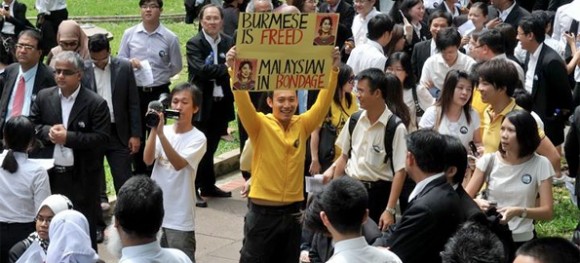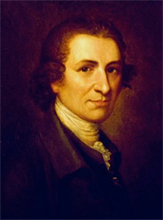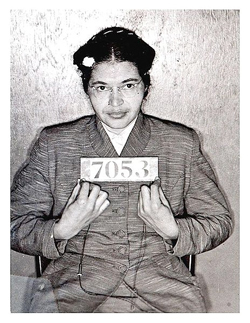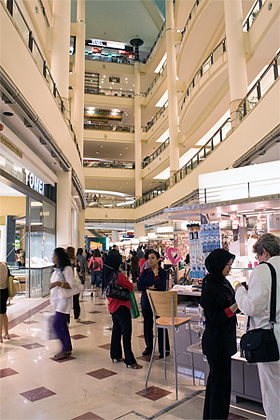TIME magazine has just named The Protestor its Person of the Year for 2011. In Malaysia, just before the 2008 general election, we too saw an increasingly emboldened public like never before. In 2007, Bersih and Hindraf staged massive street demonstrations that signalled a shift in Malaysian political apathy and affected the 2008 election results. Since then, Malaysia has seen various initiatives in civil disobedience. These involve creative elements such as wearing black to protest the Perak coup; the Bersih 2.0 march of 9 July 2011; and wearing yellow every Saturday thereafter in support of electoral reform.
Still, always ringing in the background are the voices of those who say that such events “are not our culture” and are prone to violence. Even those on the same side of a cause can be split on the best way for dissatisfied citizens to voice their concerns.

A recent cause for civil society was opposing the Peaceful Assembly Bill (PAB). Lawyers led an “illegal” march to Parliament and citizens got together for peaceful Saturday protests at KLCC. Taking the PAB as a case in point, The Nut Graph asks political scientist Dr Wong Chin Huat if there is any point to continued protests against a foregone conclusion about an issue.
TNG: The Peaceful Assembly Bill has been passed by the Dewan Rakyat and many — perhaps cynically, given the Barisan Nasional (BN)’s control of Parliament — predict it will eventually become law. What is the value of continued civil disobedience?
Protest before the bill is enacted — which can only happen once the Senate passes it and either the King signs to approve it or if he doesn’t, he will be automatically deemed to have done so after a month — is meant to warn the government about public wrath.
Civil disobedience is needed even after the bill becomes law. It’s not just about protest. It’s about defiance. It’s the readiness to be punished by an unjust law rather than follow it. The idea is to affect others to join in the defiance by one’s sacrifice and make the unjust law simply unenforceable.
Civil disobedience appeals to both our conscience and humanity. It won’t work with robots which have no conscience. The word “civil” refers not only to “civilians” — instead of militants — but can also imply “civilisation”.

As Thomas Paine aptly put it, government, even at its best, is but a “necessary evil”. Government or state is essentially the embodiment of violence to achieve its collective goal. To be civilised, the use of violence by government has to be seen as reasonable in order to be legitimate and acceptable. When the test of reasonability fails, state violence reveals its barbaric nature and in return hurts the legitimacy of the regime or policy opposed by the act of civil disobedience.
This was basically how Gandhi‘s civil disobedience or non-violent movement worked on the British colonialists. The British considered themselves as more civilised than the Indians and their colonial rule a service to help backward locals. If the Indians had violently opposed the British, the British’s sense of superiority, the white man’s burden, would have been confirmed.
However, when violence was only used by the British and not the Indians, the British were effectively confronted by this question — if they choose to beat up or kill a bunch of perfectly peaceful protesters, “Are we still human?”
It is the same question that confronted white Americans in the Deep South in 1955 when Rosa Parks preferred to be arrested and fined in court rather than give up her seat on the bus to white male passengers according to an unjust law. The black community in Montgomery boycotted the bus service for 381 days. The bus company suffered financial losses and eventually the law on segregation on public buses was lifted.
In 1960, four university students in Greensboro, North Carolina, occupied the “whites only” section of a lunch counter at a Woolworth’s Store. The students were refused service but they sat in and more than 300 followed by the fourth day. The question “Are we still human?” would have arisen if these peaceful students were violently removed by the store or the authorities.

Civil disobedience marks the end of fear and the beginning of humanity. The injustice of slavery would not be obvious if slaves appeared to be willing, even if they are acting out of fear. When slaves overcome their fear but refrain from violently overpowering the tyranny — in the form of a regime or policy — the tyranny is questioned in the court of conscience: “Are we still human?”
That’s the point of civil disobedience in opposing the PAB. We want Malaysians to be arrested, convicted and fined for holding balloons or flowers or flags which bear no trace of violence. This is to show the ridiculousness of the law and compel this question of “Are we still human?” to be asked.
How might the nature of activism in Malaysia differ from what we see or read about elsewhere such as the Occupy movement in the US, where protests are sustained by consistently large crowds?
First of all, the Occupy movement in Malaysia is quite different from their cousins elsewhere because it lacks a strong ideological base and hence a large crowd. The occupiers in Malaysia are rather mild in the sense that they will follow the police order to break up into small groups instead of causing arrests. In the West, the occupiers would rather be arrested than be evicted.
The “creative protests” in KLCC are more defiant. While we do abide by some rules of the game, like not carrying banners or placards, and replacing public speeches with poetry recital, we consciously want to constitute an “illegal assembly”.
Getting arrested would be our Key Performance Indicator (KPI). But we want to ensure the grounds of arrest are completely unreasonable like holding balloons or picnicking in a park. We defied the “love letter” from KLCC’s lawyers which threatened to sue us for damage and apply for a court injunction. Why are we not afraid of manhandling or forced eviction by the authorities? We have the tourists and shoppers as our witness. We are cheeky and determined.
We educate our participants to overcome their fear. One should not fear arrest. One should only fear arrest when arrest cannot help you make your point. In other words, arrest is conceptually seen as a tool of protest.
How long will your public protests against the Peaceful Assembly Bill continue? Is there ever a right time to stop public protests if the number of participants dwindles?

If the PAB becomes law, we will continue until the law is repealed. Our goal is to make the law unenforceable. We want to show people that if you protest strategically, like how we do at the KLCC, the authorities cannot afford to arrest you without getting eggs on their face. We want to institutionalise peaceful, fun and business-friendly protests as a feature of KLCC on Saturday afternoons.
No, we don’t hate KLCC nor are we bent on destroying their business. When many members of the public were angered by KLCC’s legal threat on us, we categorically advised them not to boycott KLCC. Instead, we asked people to think of the KLCC Park as a prime site for protests and for shopping after protesting. The point? Protests are good for the economy, not just for democracy. So, stopping peaceful protests hurts, rather than protects, business.
What can people who oppose this or any other unjust law continue to do? Was the move by PAS to seek a judicial review of the Peaceful Assembly Bill, to prevent it from becoming law, a wise move for the independence of institutions? Doesn’t such a move amount to inviting the judiciary to interfere with the decisions of the legislative?
There are three main ways to stop laws: legislative, public and judicial. The legislative approach is hopeless given BN’s tight control of both houses in Parliament. It will work only when the public constantly defy and protest against the law.
The judicial approach taken up by PAS is the third alternative. This, however, has been rejected by the court on the grounds that judicial review should not take place before the bill becomes law. In general, is it democratically desirable for the judiciary to restrain what the legislative can do? If you think that Parliament is supreme, as in the case of old Britain where there is not even a written constitution, then the court cannot denounce a law as unconstitutional. But even this is no longer true in Britain when she subjects herself to the human rights standards of the European Union.
So, if you believe that our federal constitution is supreme and that there are fundamental values in the constitution that must not be violated, then it would be legitimate to ask the court to pronounce the law’s unconstitutionality after it has been enacted.
I am a pragmatist and am not too fussy about Parliament not having enough room to act independently. Since when has our Parliament acted independently from the executive? If Parliament is to follow the will of the other branches of government, I have no qualms if the order comes from the judiciary rather than the executive! ![]()
Political scientist Wong Chin Huat is a campaign coordinator of the creative protests against the Peaceful Assembly Bill at KLCC. He is also a Bersih 2.0 steering committee member. To earn a living, he works as a journalism lecturer. If readers have questions and issues they would like Wong to respond to, they are welcome to e-mail editor@thenutgraph.com for our consideration.
[related-posts]

